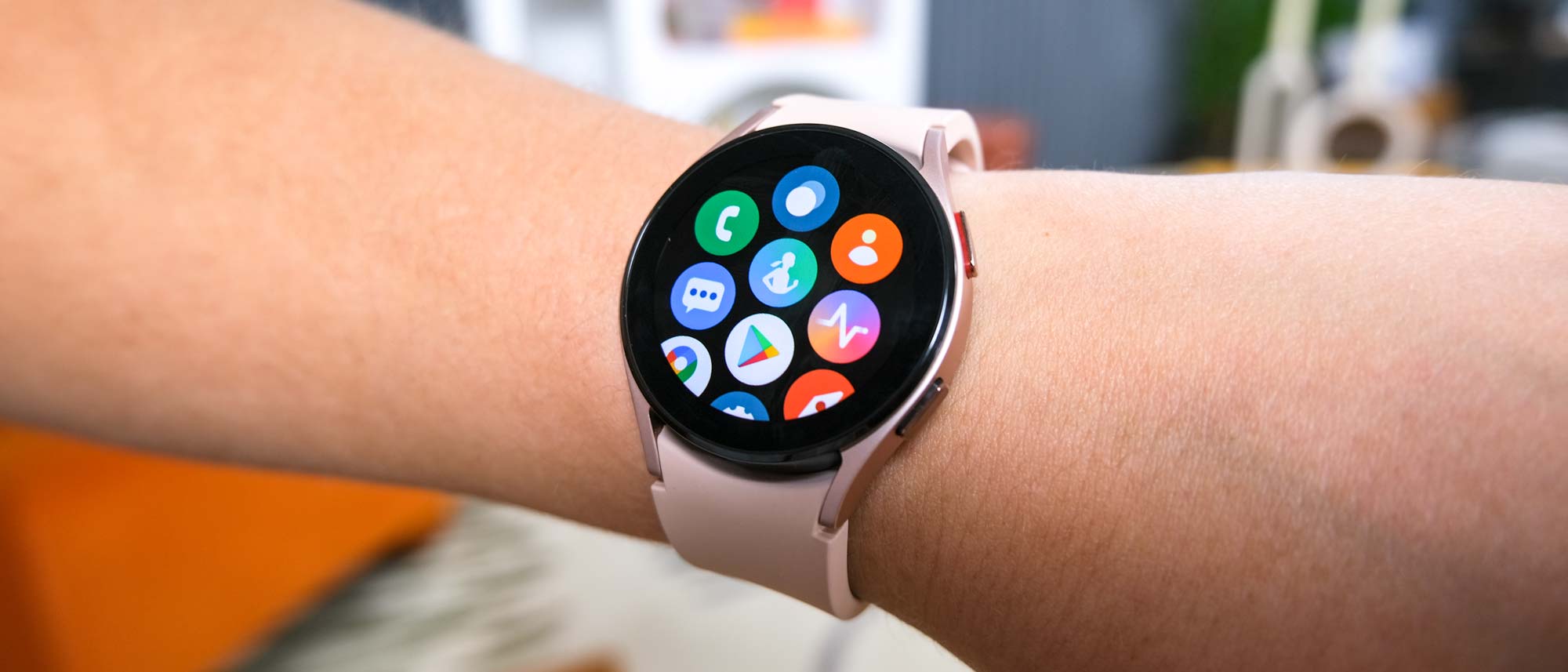Tom's Guide Verdict
The Samsung Galaxy Watch 4’s sharp design, smart software and standout health sensor make for a promising upgrade that somehow costs less than last year’s version. Plus the Classic model still offers everyone’s favorite rotating bezel.
Pros
- +
Slimmer design and new watch faces
- +
New Wear OS feels like Tizen, but with more apps
- +
First major smartwatch with body composition analysis
- +
More affordable than Galaxy Watch 3
Cons
- -
Concerns with BIA sensor
- -
Battery life can be inconsistent
Why you can trust Tom's Guide
Processor: Exynos W920
Software: Wear OS + One UI Wach
Sensors: Samsung BioActive Sensor (PPG+ECG+BIA)
Connectivity: Bluetooth, Wi-Fi, LTE (optional), NFC
Memory: 1.5GB RAM + 16GB
Durability: 5ATM + IP68 / MIL-STD-810G
Smartphone compatibility: Android 6.0 or higher
Battery life: 40 hours
Editor's note: The Samsung Galaxy Watch 5 and Samsung Galaxy Watch 5 Pro are now available, and offer a new health sensor and longer battery life. However, you may be able to get the Samsung Galaxy Watch 4 at a discount. Be sure to check out our guide to the Samsung Galaxy Watch 5 vs. Galaxy Watch 4.
The Samsung Galaxy Watch 4 feels familiar, yet different, and I mean that in the best way possible. It looks like a Galaxy Watch, but this iteration is sharper and more sophisticated. The software works like Tizen, but the updated Google Wear OS platform is pragmatic and precise.
Samsung ditched the ‘Active’ branding for its latest lineup, instead pitching a sporty-looking Galaxy Watch 4 as the company’s flagship and a ‘Classic’ version that carries on the luxurious characteristics of last year’s Samsung Galaxy Watch 3.
The Galaxy Watch 4 packs a 3-in-1 health sensor for measuring heart rate, taking ECGs and reading body composition — it's the first major smartwatch to offer bioelectrical impedance analysis (BIA).
There's no question the Galaxy Watch 4 was best smartwatch and yet for people with Samsung smartphones, and the best Samsung watch ever. Read this Samsung Galaxy Watch 4 review to find out why, though, again, it's being replaced by the Galaxy Watch 5.
Samsung Galaxy Watch 4 price and availability
Both the standard Samsung Galaxy Watch 4 and Galaxy Watch 4 Classic are available for purchase as of August 27, 2021.
The Galaxy Watch 4 starts at $249.99 for the 40mm Bluetooth model and $299.99 for the 40mm LTE model. The Galaxy Watch 4 Classic starts at $349.99 for the 42mm Bluetooth model and $399.99 for the 42mm LTE model. If you're looking to save, you can get discounts direct with the retailer with our Samsung promo codes.
Get instant access to breaking news, the hottest reviews, great deals and helpful tips.
As an aside, a Samsung Galaxy Watch 5 Pro model has been tipped, and it could have a huge smartwatch battery.
Be sure to check our guide on how to set up the Samsung Galaxy Watch 4 once you get yours.
Samsung Galaxy Watch 4 vs. Galaxy Watch 4 Classic: What’s different?
| Header Cell - Column 0 | Galaxy Watch 4 | Galaxy Watch 4 Classic |
|---|---|---|
| Starting price | $249.99 | $349.99 |
| Size options | 40mm/44mm | 42mm/46mm |
| Dimensions | 40mm:40.4 x 39.3 x 9.8 mm; 44mm: 44.4 x 43.3 x 9.8 mm | 42mm: 41.5 x 41.5 x 11.2 mm; 46mm: 45.5 x 45.5 x 11.0 mm |
| Weight | 40mm: 0.91 ounces 44mm: 1.06 ounces | 42mm: 1.64 ounces 46mm: 1.83 ounces |
| Battery capacity | 40mm: 247mAh; 44mm: 361mAh | 42mm: 247mAh; 46mm: 361mAh |
| Color options | Black, Silver, Pink Gold, Green | Black, Silver |
Our dedicated guide to the Samsung Galaxy Watch 4 vs. Galaxy Watch 4 Classic covers all the differences (and similarities) between the two smartwatch versions.
Let’s get this out of the way — the Samsung Galaxy Watch 4 and Watch 4 Classic are identical on the inside. From the new Wear OS software and Samsung’s One UI skin to the 3-in-1 health sensor and expansive watch face collection, you’ll get the same software experience.
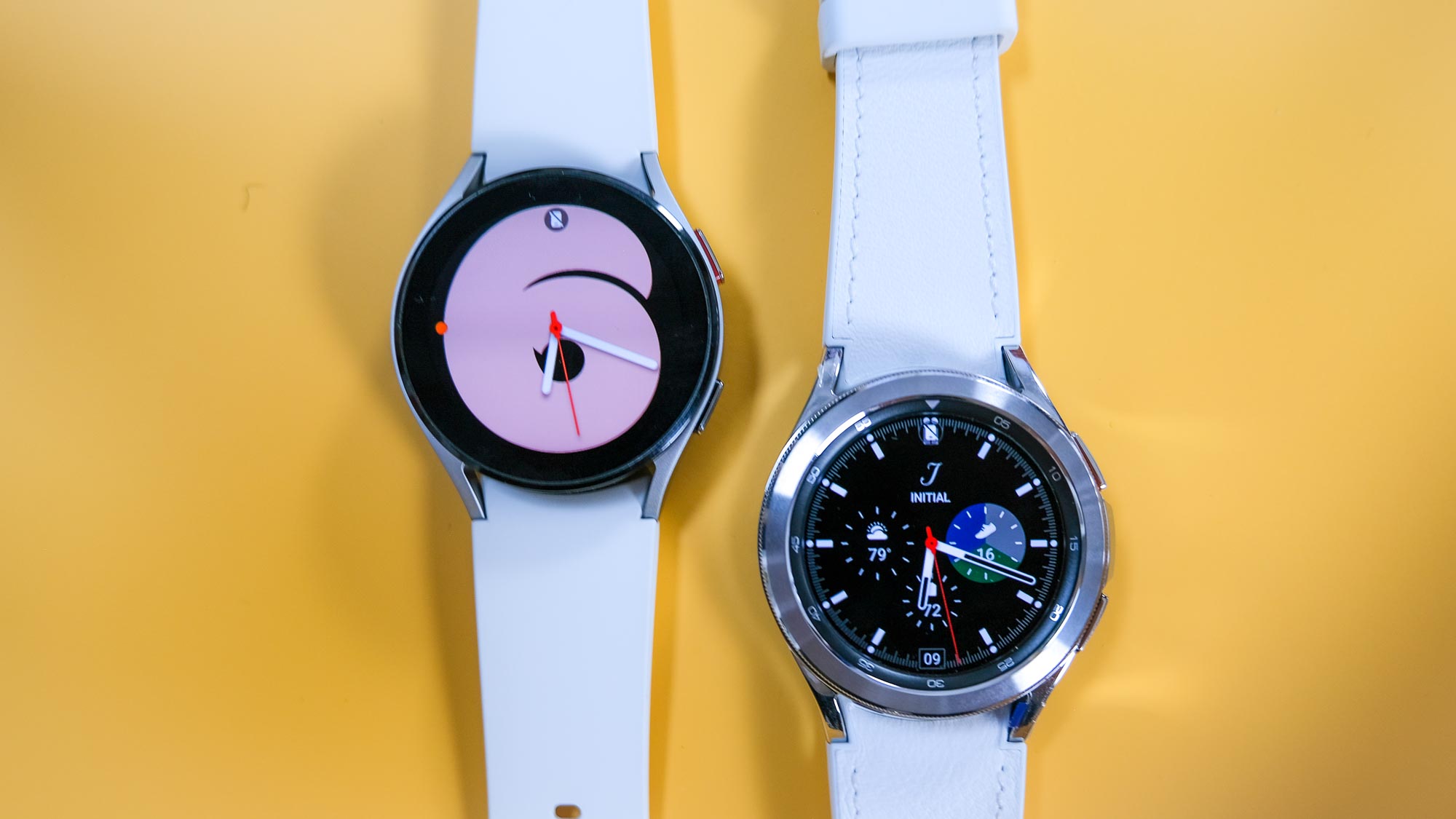
The Samsung Galaxy Watch 4 Classic features fancier materials such as stainless steel case, leather straps and the physical rotating bezel. Think of it like the Apple Watch’s ‘Edition’ line. Except the Galaxy Watch 4 Classic is far more affordable than the Apple Watch Edition models, which are typically made from high-end materials like ceramic and titanium. Though it costs $100 more than the standard Galaxy Watch 4 Classic, it’s starting price is still less expensive than the entry-level Apple Watch 6.
Samsung Galaxy Watch 4: Design
Both versions of the Samsung Galaxy Watch 4 feature a redesigned frame that allows for gapless transition from the smartwatch chassis to the straps. The uniform set of crown buttons also sport an oblong shape, rather than one protruding round crown accompanied by a flush side button.
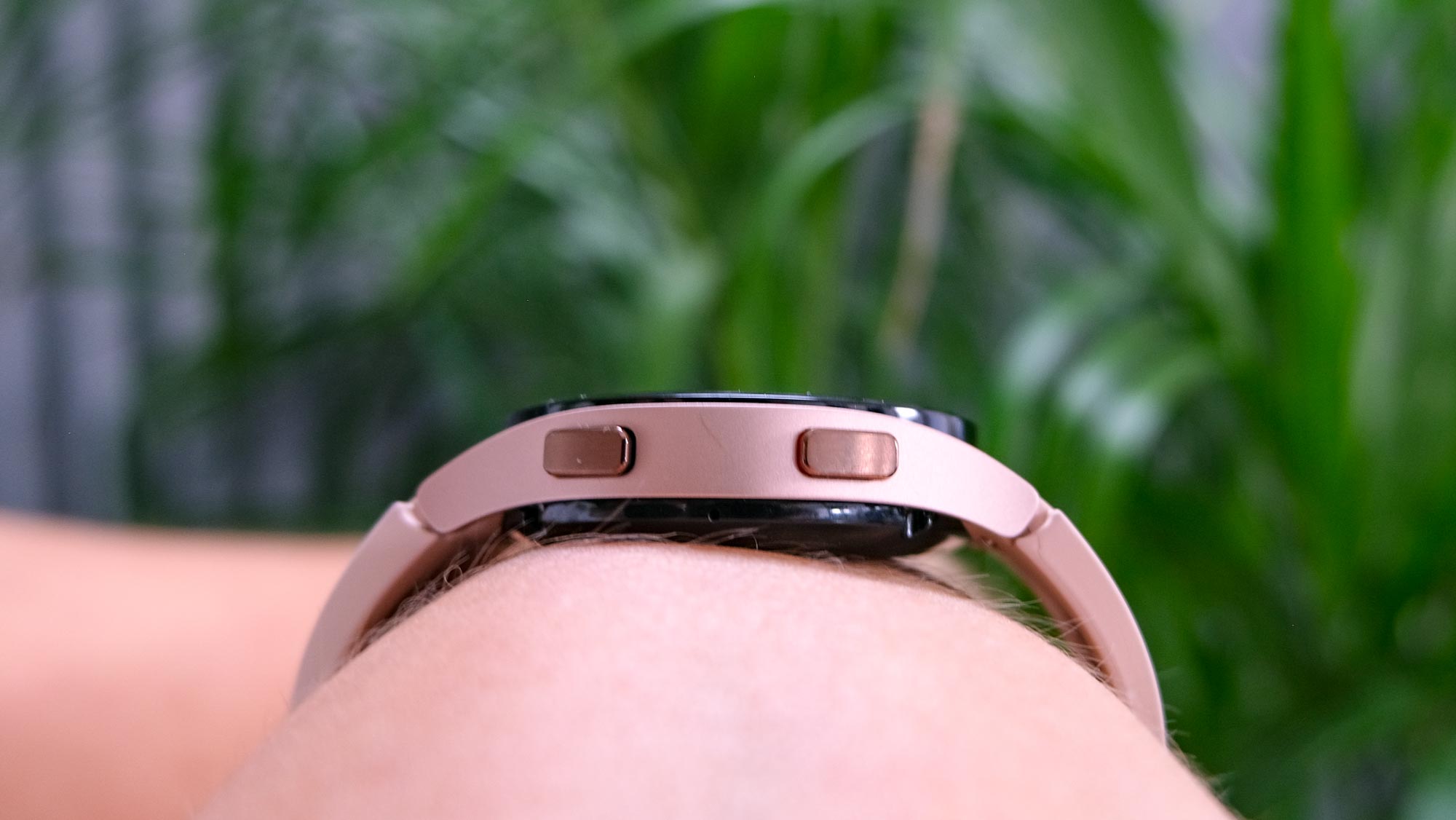
Despite these subtle changes, the Galaxy Watch 4 pays homage to the Galaxy Watch models of the past. The Galaxy Watch 4 Classic gets the rotating bezel, which is both a handy navigation tool and excellent fidget spinner. Since the original Samsung Galaxy Watch debuted the bezel, it’s become as iconic to the product as the S Pen is — err, was? — to the Galaxy Note smartphone. Which is why it is controversial that Samsung opted to remove the rotating bezel from the new Samsung Galaxy Watch 5.
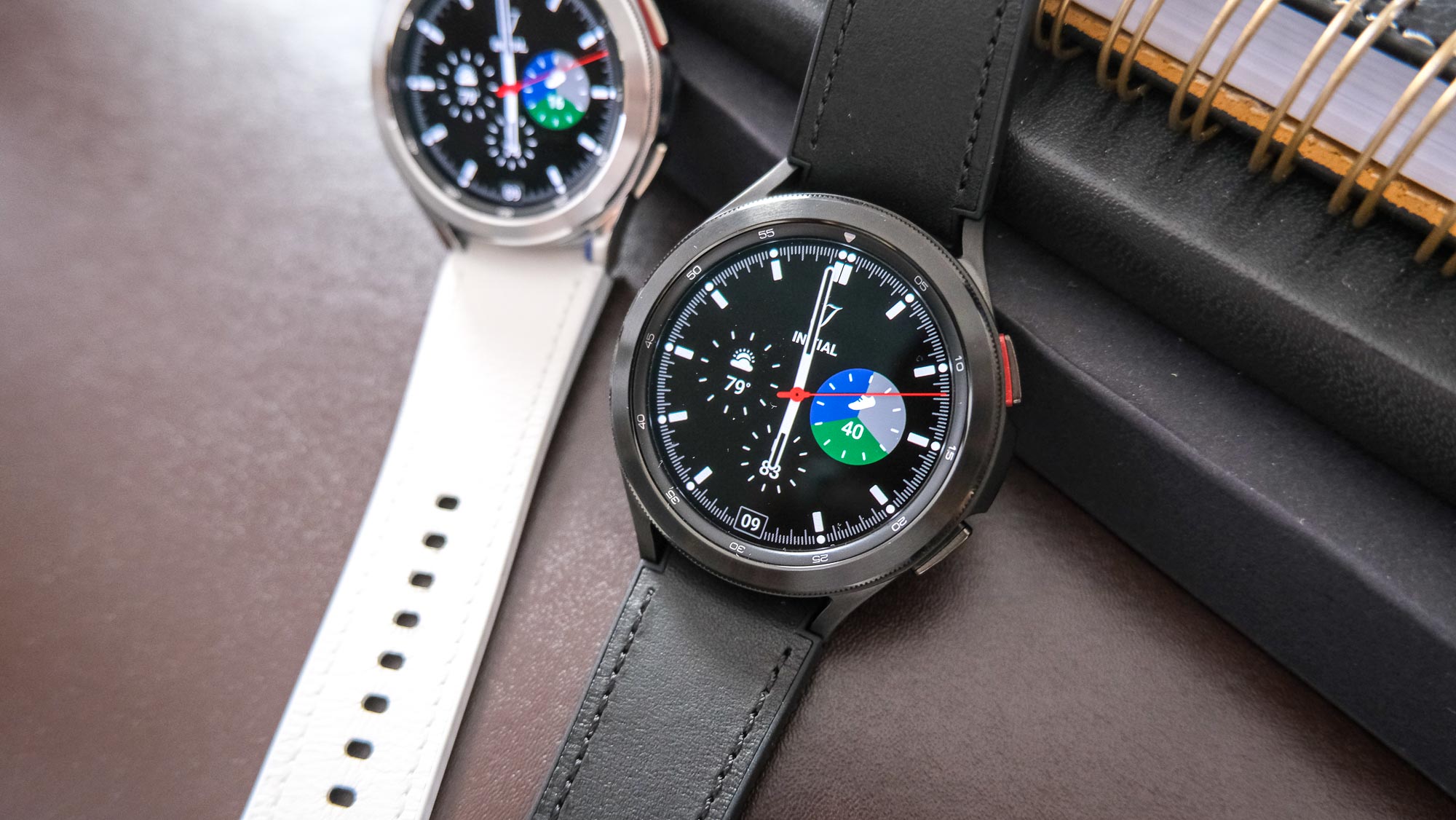
So as someone who’s used the Galaxy Watch 3 more recently than the Samsung Galaxy Watch Active 2, adjusting to a capacitive version of the bezel on the baseline Galaxy Watch 4 took time. But minus the mechanism, the smartwatch is a lot slimmer, making for a modern gadget that won’t be mistaken for a traditional timepiece.
- Samsung Galaxy Watch 4 vs. Galaxy Watch Active 2: What are the differences?
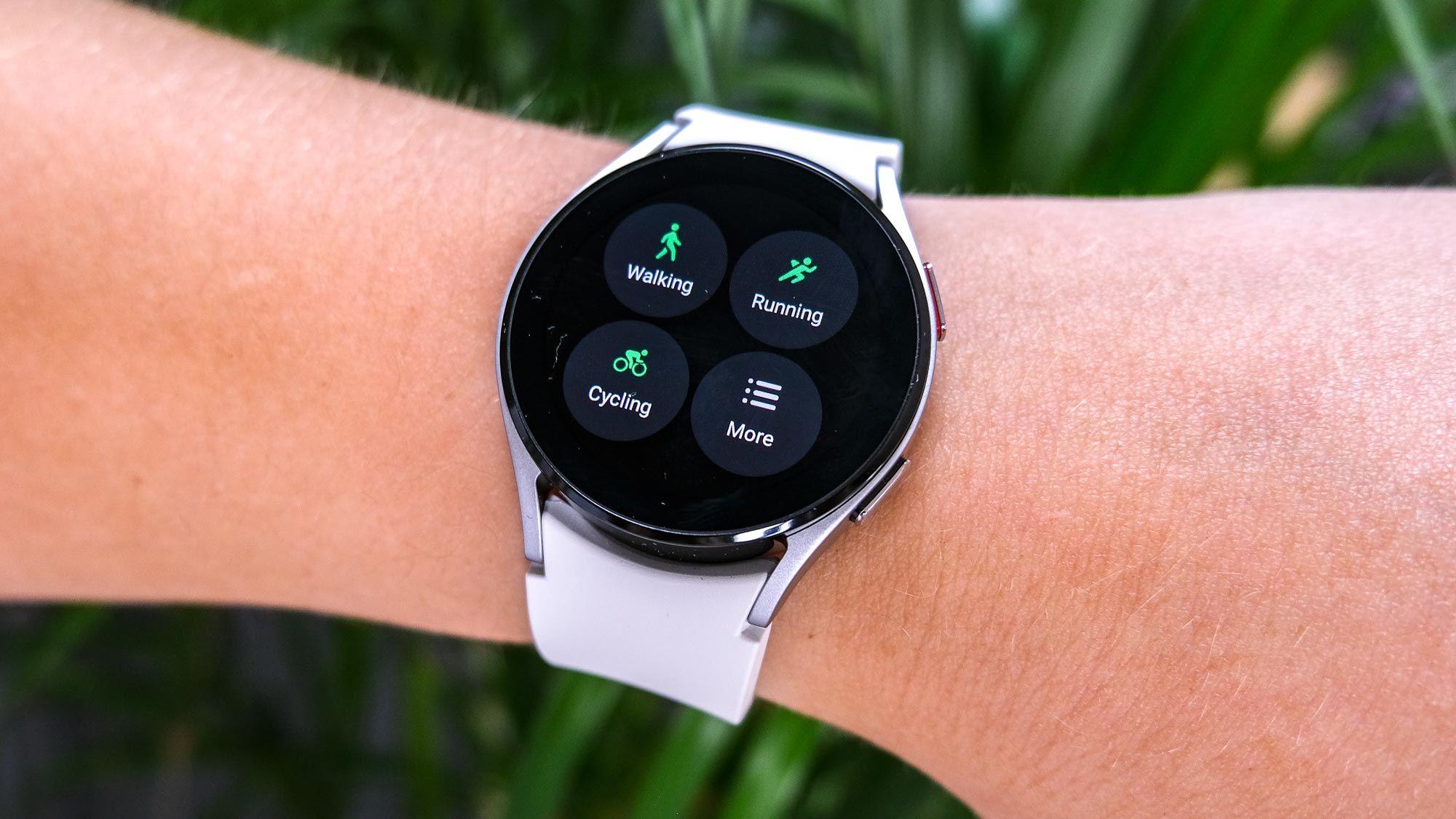
I’d still wear it from the gym to dinner, though, especially in the Silver or Pink Gold options. That’s just my taste. I also appreciate the Green version that’s color-matched to the Samsung Galaxy Z Flip 3, but it only comes in the 44mm size. I prefer the 40mm model for my wrist size, though my male colleague tried on the 46mm Galaxy Watch 4 Classic and enjoyed the look of the larger display.
Samsung Galaxy Watch 4: Wear OS pros and cons
The Samsung Galaxy Watch 4’s software provides the best experience I’ve ever had using Wear OS, period. Although smartwatches with the old Wear OS have fooled me before — working fine at first until glitches start oozing out — the Galaxy Watch 4 doesn't falter. I will say the software still feels very Tizen-esque, but it’s a good thing. Finding my rhythm took no time, letting me switch between apps and menus and setting pages seamlessly.
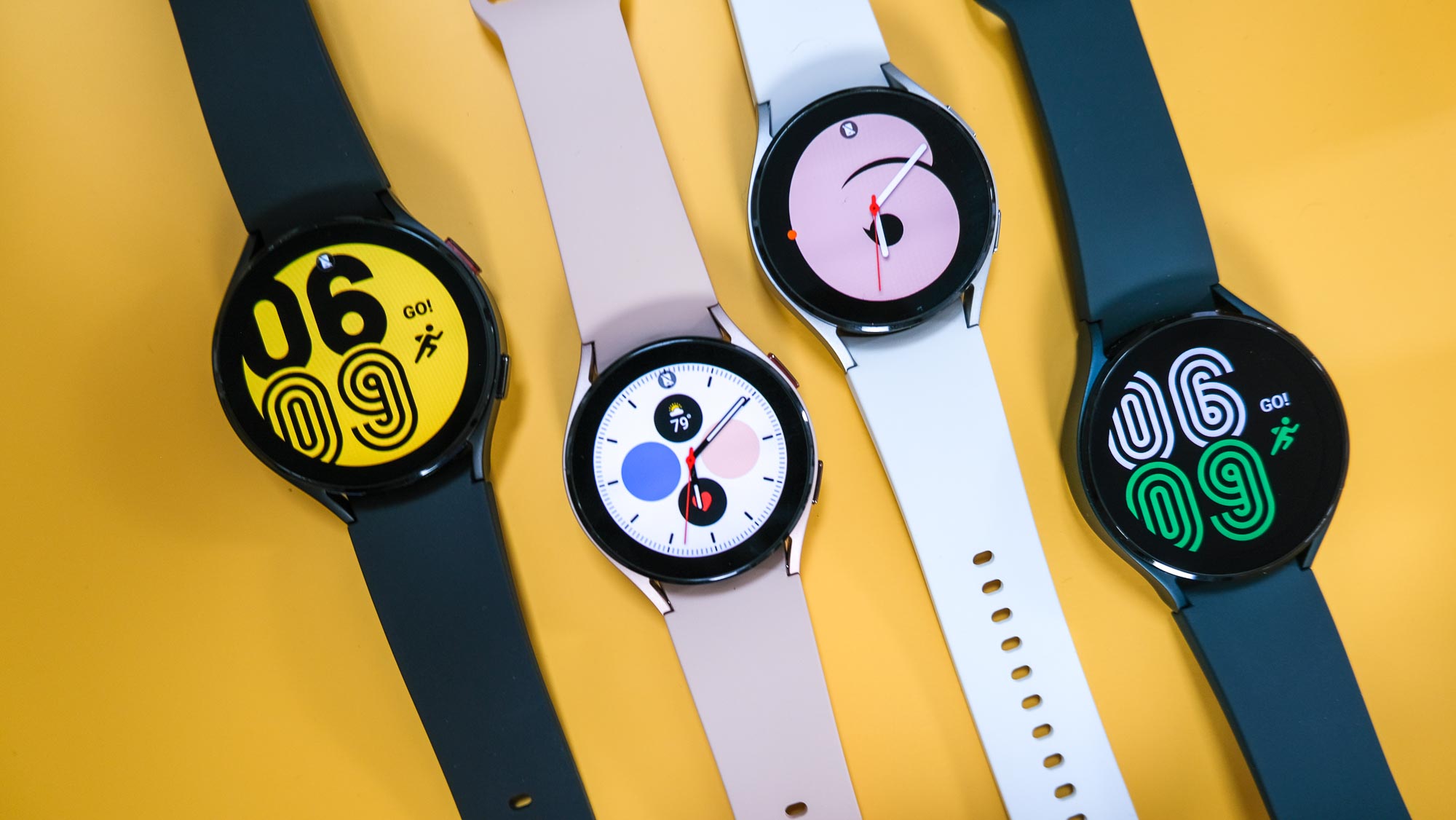
The rotating tiles are obvious remnants of Tizen, plus Samsung Pay and Samsung Health still take priority. Beyond that, Google’s new app cloud (which looks a lot like watchOS, but it’s convenient so who cares?) is loaded with Google’s programs. Including, as of May 23, Google Assistant.
You do get Google Maps, though. Having it on my wrist helps me get around easily, whether I'm walking in the city or driving in the suburbs. Check out more of the Samsung Galaxy Watch 4 Wear OS features I'm enjoying so far. Also see our WearOS vs. watchOS comparison for how the Galaxy Watch 4's software compares to the Apple Watch's software.
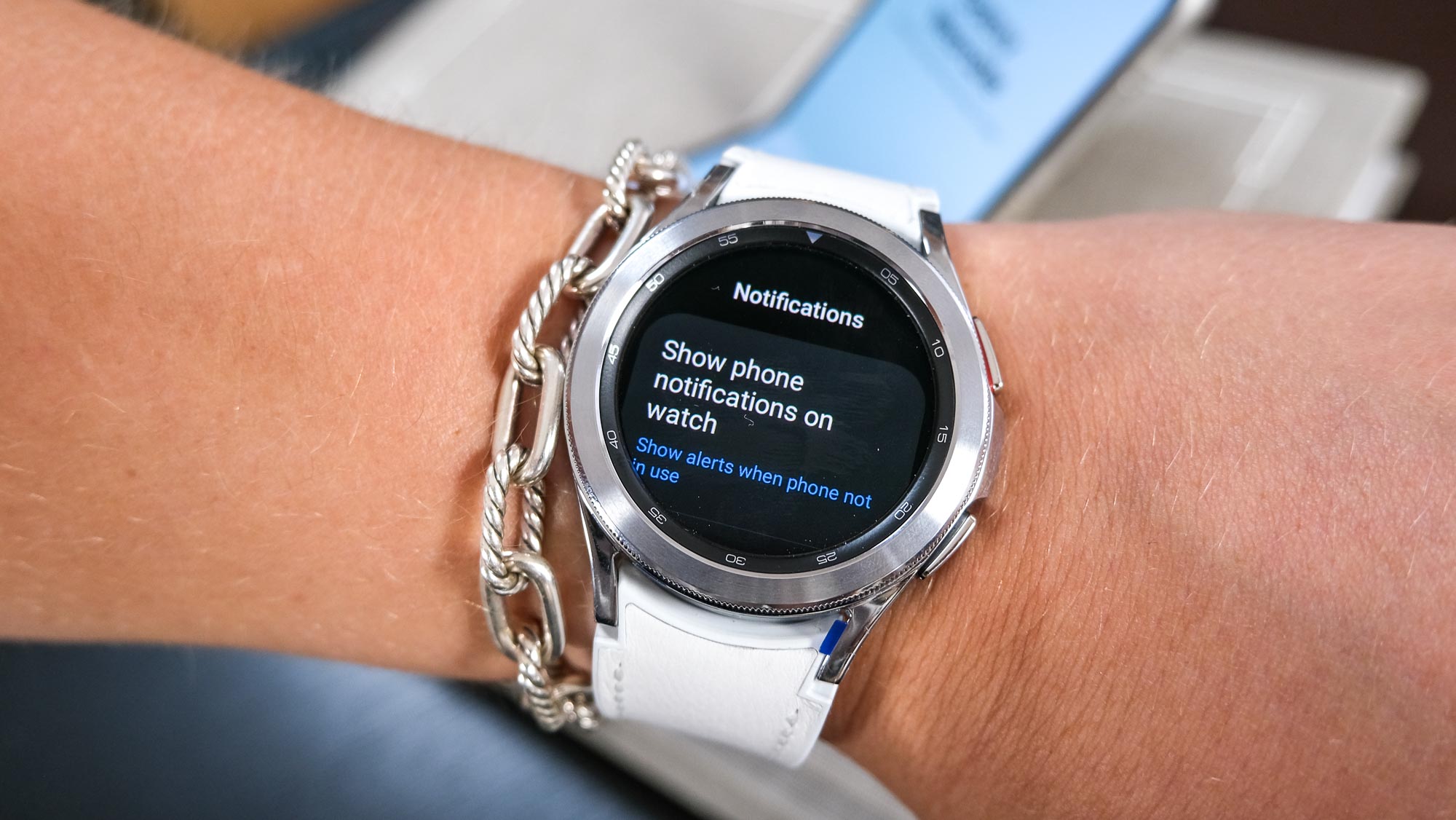
Complementing Wear OS, One UI Watch makes the Galaxy Watch 4 a more active member of the Samsung device ecosystem. The software skin transition settings and tools from a Galaxy smartphone to a Galaxy smartwatch, and vice versa, automatically. One UI Watch also leverages an expansive watch face library, complete with a proprietary editing suite for developers. Bubbly numbers, animal animations and color-coordinated complications that remind me of Android 12 are some of my frequent face choices.
Samsung Galaxy Watch 4: Body composition analysis
Samsung developed a new health sensor for the Galaxy Watch 4. It combines heart rate monitoring (PPG), an electrocardiogram reader (ECG) and bioelectric impedance analysis (BIA) for a 3-in-1 sensor that sits closer to the skin than the individual health sensors in the previous Galaxy Watch.
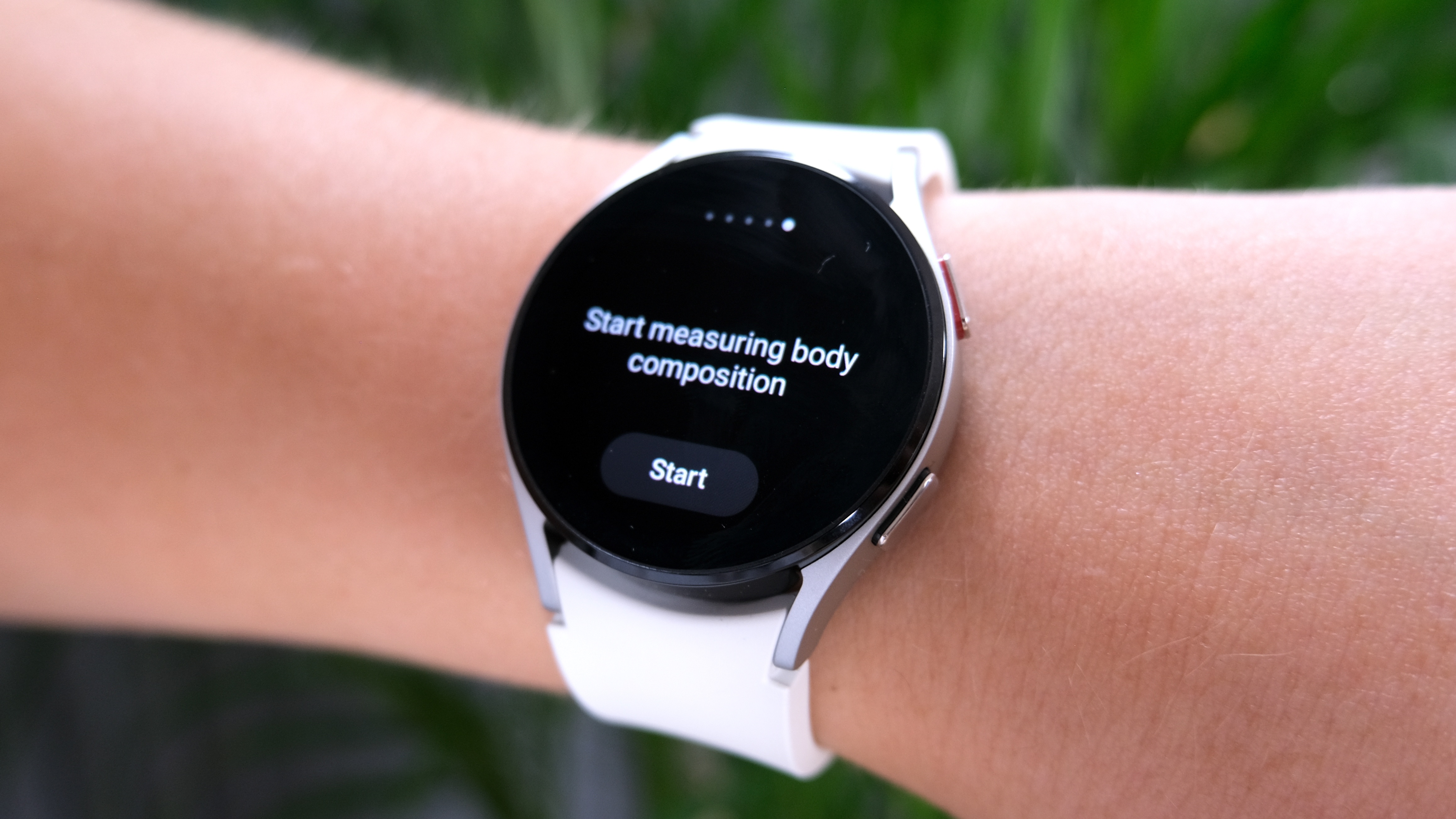
Of those, BIA is the big news. Similar to what you’ll find on the best smart scales, BIA sends a weak electric current through your body to analyze body fat percentage, body mass index (BMI), muscle mass, bone mass, body water percentage and more. Taking a BIA reading is quick, but you’ll need to hold your fingers against the crown buttons for about 15 seconds without those fingers resting on the skin next to your smartwatch. It’s a little awkward, so we made a guide on how to use Samsung Galaxy Watch 4 to measure body composition.
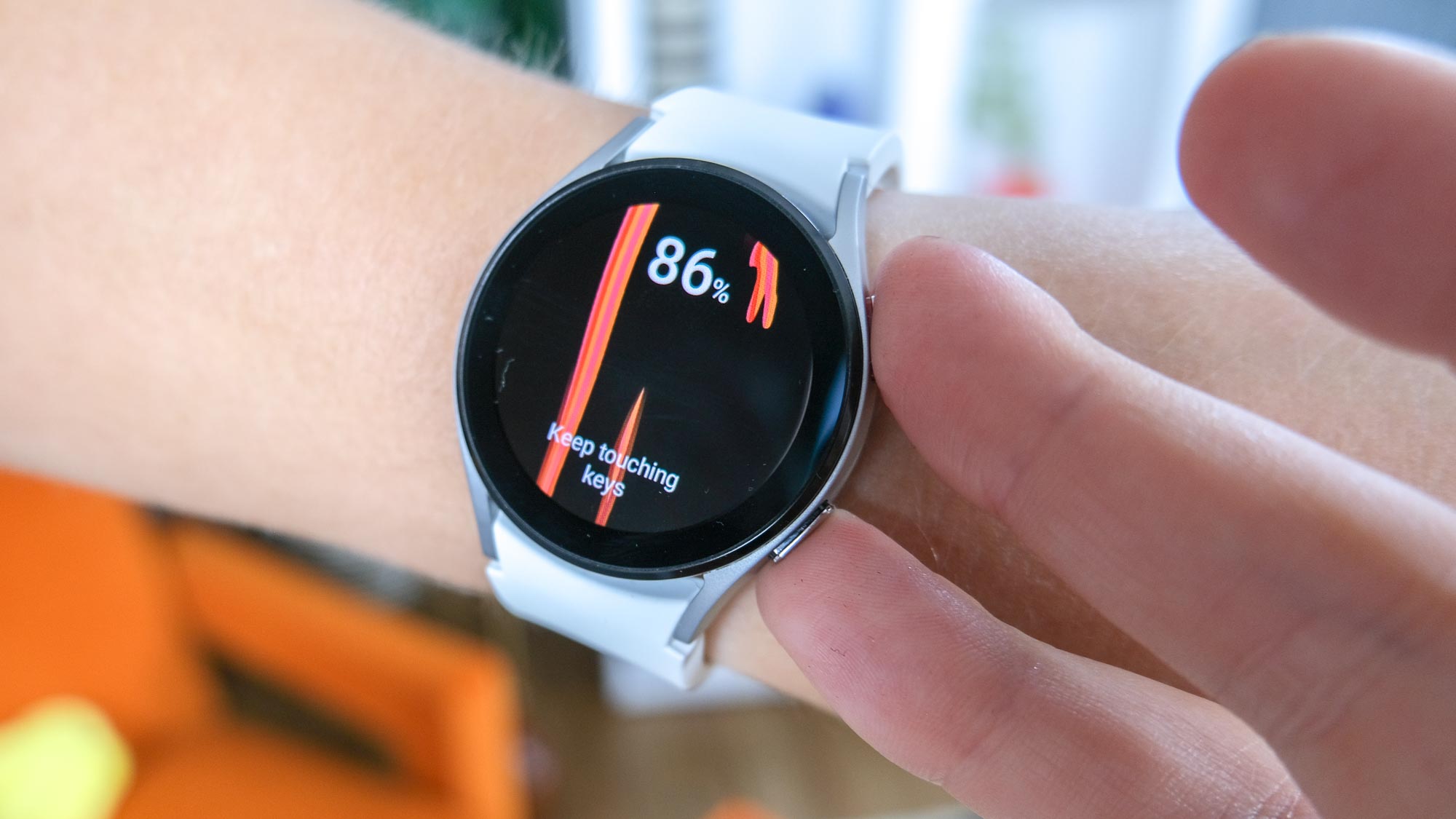
When used properly, body composition analysis can help you understand how changes you make to your diet or activity impacts your internal makeup — not just your weight. But there are caveats. For one, it's generally not recommended that people with pacemakers or people who are pregnant use BIA. While many smart scales have a mode that disables BIA. Samsung simply says those who shouldn't use it, shouldn't use it.
Then there's concerns about the metrics gathered from BIA possibly perpetuating body dysmorphia. Samsung simply says the measurements might not be accurate for those under 20 years old, but doesn't appear to put a true age restriction on the feature.
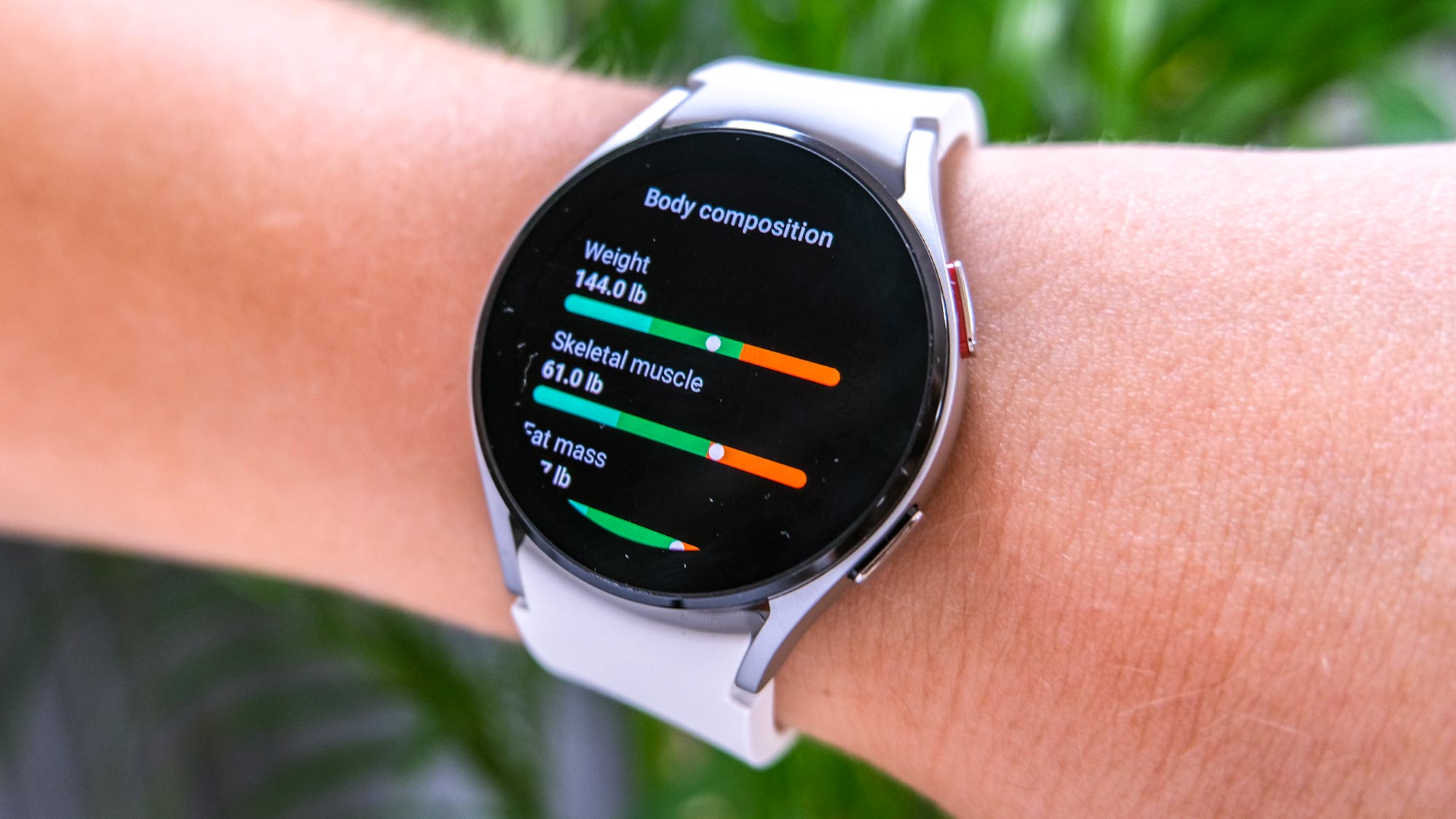
I don't feel it appropriate to share the intimate details of my body makeup with the internet, but I will note the discrepancies with measurements. The Samsung Galaxy Watch 4's readings did not match my Wyze Scale's. The measurements were as much as 5% off for metics like body fat perfect. It's hard to say which device is more accurate without seeing a doctor, but I probably wouldn't use either as my north star for wellness goals. And again, if you're pregnant, have a pacemaker or battle body dysmorphia, I'd encourage you to seek out professional medical advice before buying this smartwatch.
Samsung Galaxy Watch 4 review: Activity tracking
Over the course of one week, I used the Samsung Galaxy Watch 4 to track a variety of workouts indoors and outdoors. For my Samsung Galaxy Watch 4 workout test I started with weightlifting, and while the watch lets you track individual types of movement (ie. arm curls, bench press, lateral raises, pull-ups) I stuck with the catch-all circuit training option. The Apple Watch has a few more options when it comes to tracking different sports, but the Galaxy Watch 4 has more niche selections. You'll likely need to add workout types from the Samsung Health app on your smartphone, though — the preset list isn't extensive.
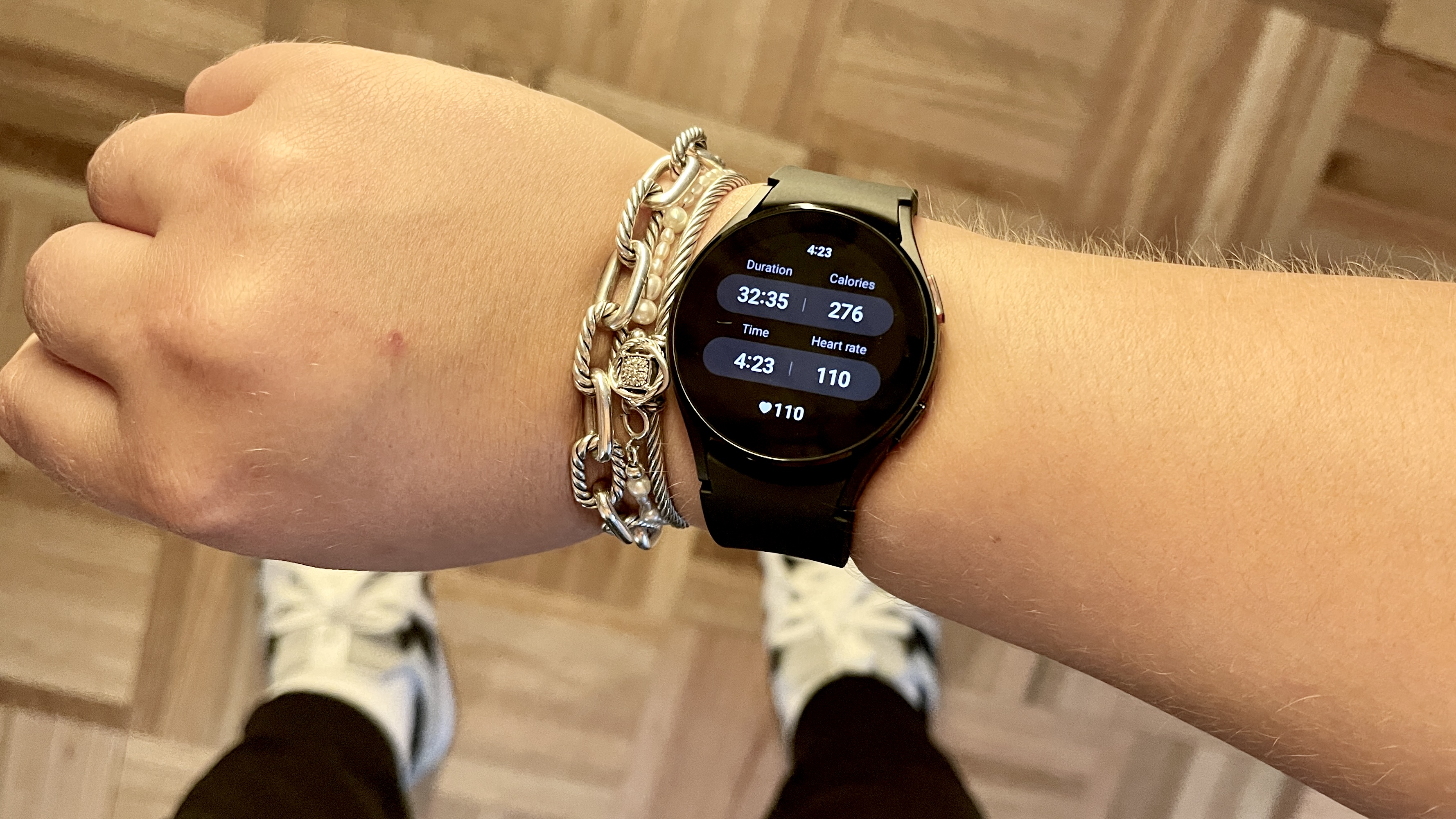
When it came to yoga, I sensed my calorie count ran high, but I recognized my heart rate updated more quickly than it did on the Galaxy Watch 3. For a workout where your heart rate stays in a shorter range than, say, cardio, the frequent refresh is helpful for seeing how certain poses impact my body.
I couldn't monitor my wrist as closely while cycling as I could in downward dog. Luckily, the Galaxy Watch 4 provides audible and vibration updates on mileage, plus a brief activity summary every 30 minutes. Again, I think the watch's calorie count is too generous, but the GPS mapped my reliable 10-mile route well.
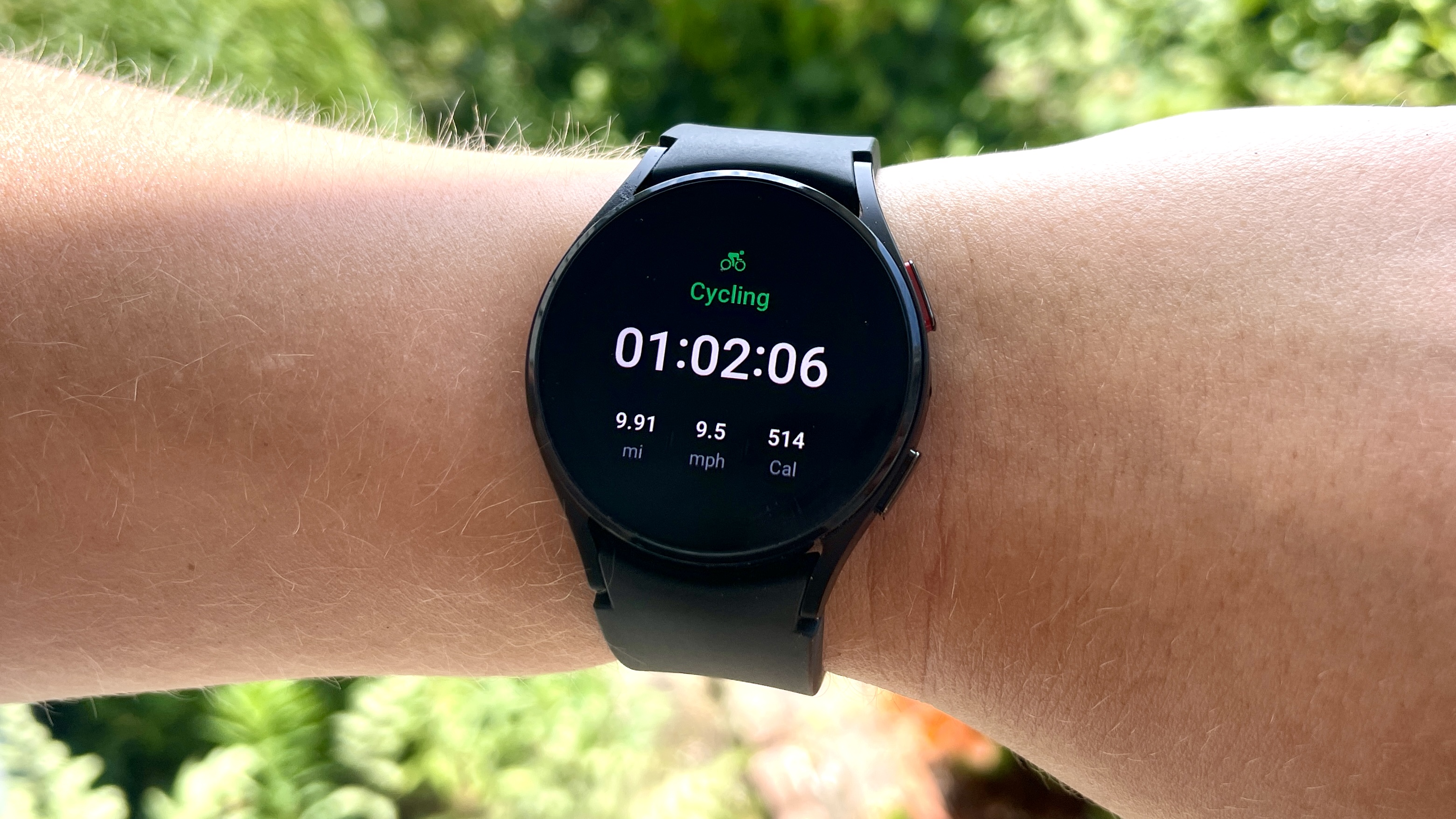
The Galaxy Watch 4's automatic workout tracking is similarly successful. Juggling my 90-pound dog, phone, keys and sometimes a coffee, I often forget to launch a walk workout. A buzz on wrist let me know when the Galaxy Watch 4 detects my walk and picks up tracking from when I left my apartment. It also has a useful auto-pause function, so my dog's need to say hi to every passerby doesn't result in me recording a 35-minute mile.
Samsung Galaxy Watch 4: Sleep and stress tracking
Samsung improved sleep tracking metrics for its latest smartwatch. Blood oxygen is measured once a minute overnight on the Galaxy Watch 4, compared to once every 30 minutes on the Galaxy Watch 3. More SpO2 readings could mean more insight on rest quality, especially for those with conditions like sleep apnea. When you sleep next to a compatible smartphone, the sounds of your snores get tracked, too.

I'm a quiet sleeper, but I do often wake up for an hour at a time in the early morning. In these instances, the Galaxy Watch 4 would record two separate sleeps, but show me the total time asleep in the morning recap.
Another recovery tool, the Galaxy Watch 4’s stress app shows your stress levels. I stayed in the green, which means not too stressed, but the smartwatch still gave me the option to launch a breathing session. The Fitbit Sense takes a more convincing approach to stress monitoring and management, though it’s encouraging to see Samsung’s watch catching up.
Samsung Galaxy Watch 4: Battery life
As much as I’d like to call the battery life a let down (some rumors hinted at a week-long battery life,) it’s a far cry from a dealbreaker. Samsung estimates the Galaxy Watch 4 can last 40 hours with regular use. It said something similar last year, but as I cover in my guide to the Samsung Galaxy Watch 4 vs. Galaxy Watch 3, with GPS, activity tracking and the always-on display enabled, I needed to charge every 24 hours.
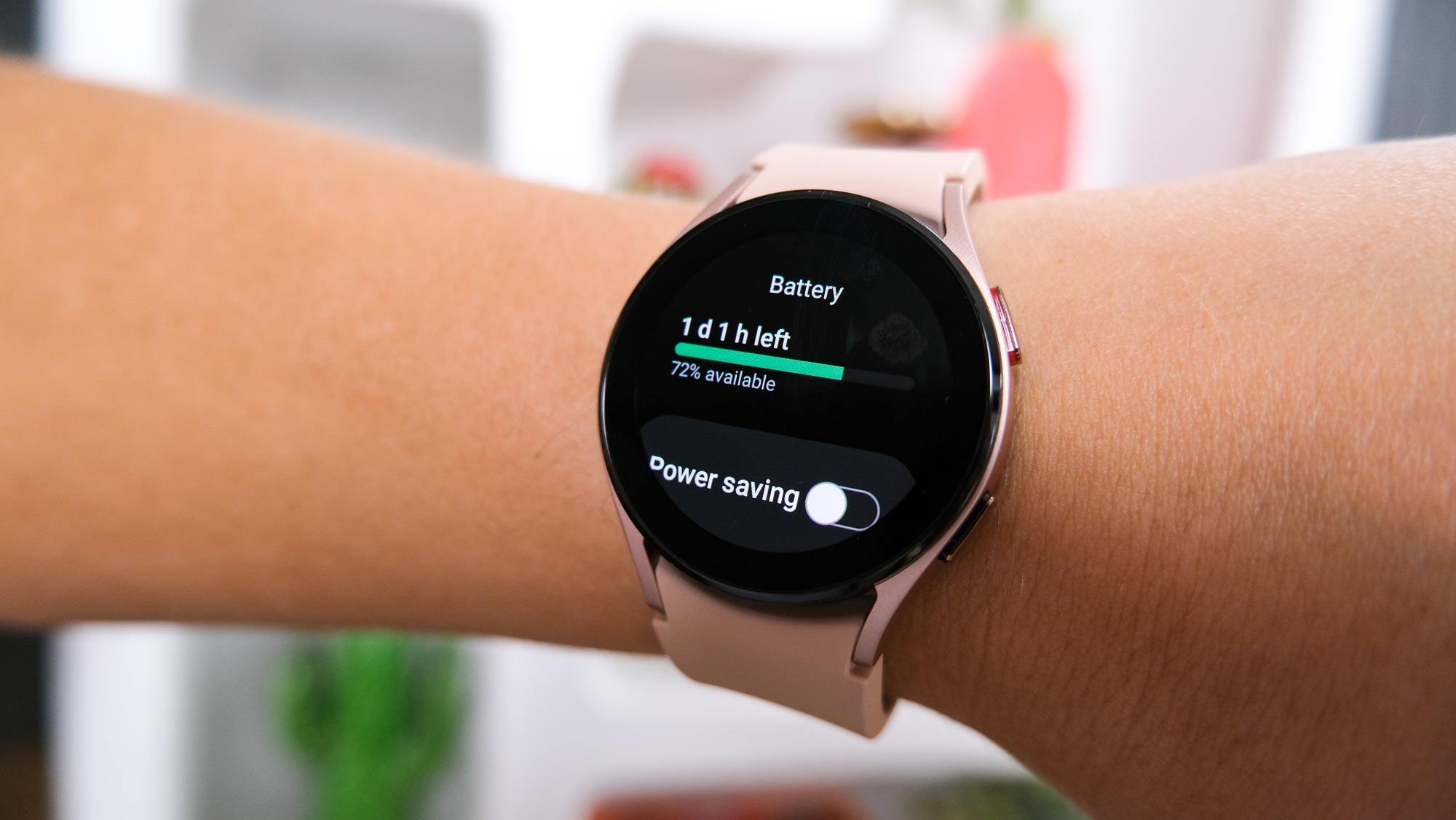
Daily charging is just the norm for most mobile devices we use every day. Sure, many great smartwatches and many of the best fitness trackers last several days without a charge. But as long as you’re not disappearing into the woods for a week, I wouldn’t get caught up on the difference between 40 hours and a day.
I wish the Samsung Galaxy Watch 4 battery life was more consistent, though. I found some days the watch needed to be charged more often than 24 hours.
Samsung Galaxy Watch 4: Verdict
With design updates, refreshed software and a breakout BIA system, the Samsung Galaxy Watch 4 is by no means an incremental upgrade. And all at a lower price, I might add. That's why Samsung Galaxy Watch 4 Classic isn’t worth the money, in my opinion.
But sometimes, when you make many changes at once, there's more chances for individual changes to fall short. The battery life could be more consistent, and Wear OS is missing some key features at launch. I'm also hesitant to celebrate the benefits of wrist-based body composition analysis for the number of people the feature might be unsafe for.
Instead, the Samsung Galaxy Watch 4's success comes down to integrating as obnoxiously well with Galaxy devices as the Apple Watch does with the greater Apple ecosystem. It masters a convenience that's been absent for Samsung's users, letting all the other chips fall in place. It's the best smartwatch for Android you can buy now. Stay tuned to see if it maintains its place as competitors like the Montblanc Summit 3 and Google Pixel Watch (or even the rumored Samsung Galaxy Watch 5) enter the market.
Take a look at our Samsung promo codes for the latest discounts and offers.
- More: How to use SOS emergency features on iPhone, Android and smartwatch

Kate Kozuch is the managing editor of social and video at Tom’s Guide. She writes about smartwatches, TVs, audio devices, and some cooking appliances, too. Kate appears on Fox News to talk tech trends and runs the Tom's Guide TikTok account, which you should be following if you don't already. When she’s not filming tech videos, you can find her taking up a new sport, mastering the NYT Crossword or channeling her inner celebrity chef.
